Aug. 31, 2025
Prelims Pointers
Aug. 31, 2025
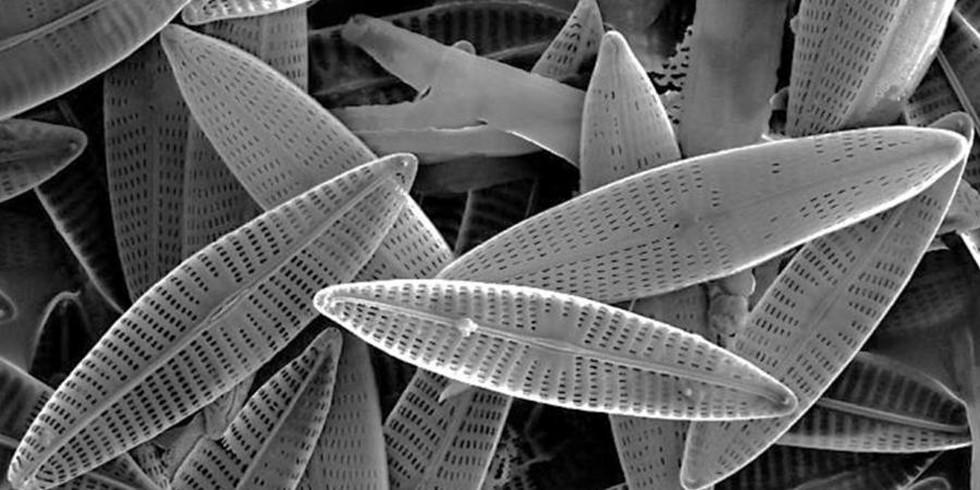
About Diatoms:
- These are photosynthetic, single-celled organisms.
- These are microscopic algae and serve as the base of the aquatic food chain.
- They are a major group of algae and form one of the most common forms of phytoplankton.
- Habitat:
- They are found in almost all aquatic habitats, including lakes, ponds, streams, rivers, and the ocean.
- Most diatoms live as free-floating cells in the open water, but some live on the bottom (benthos), attached to surfaces such as plants or rocks, or in the bottom sediment.
- These surface-attached diatoms represent a significant part of the periphyton, which is a mixture of algae, cyanobacteria, microbes, and detritus that is attached to submerged surfaces.
- Due to their sensitivity towards any water chemistry changes, they are excellent indicators of aquatic health.
- Like other algae, diatoms have no leaves, stems, roots, or flowers, but the cell of every diatom contains chlorophyll, the substance that is responsible for the green color of leafy plants.
- They are the only organism on the planet with cell walls composed of transparent, opaline silica.
- Diatom cell walls are ornamented by intricate and striking patterns of silica.
- Each species has a distinct pattern of tiny holes in the cell wall (frustule) through which they absorb nutrients and get rid of waste.
- Diatoms can photosynthesize which means they can convert dissolved carbon dioxide in the water into oxygen that is essential for the survival of fish and other aquatic organisms.
- They also serve as a major source of atmospheric oxygen for the planet, and a key food source for higher organisms in the food chain, such as zooplankton, molluscs, and fish.
- Collectively, they are responsible for generating up to 50% of the oxygen produced globally each year.
- Diatoms also play a crucial role in the nutrient cycling of marine and lake waters.
Prelims Pointers
Aug. 31, 2025
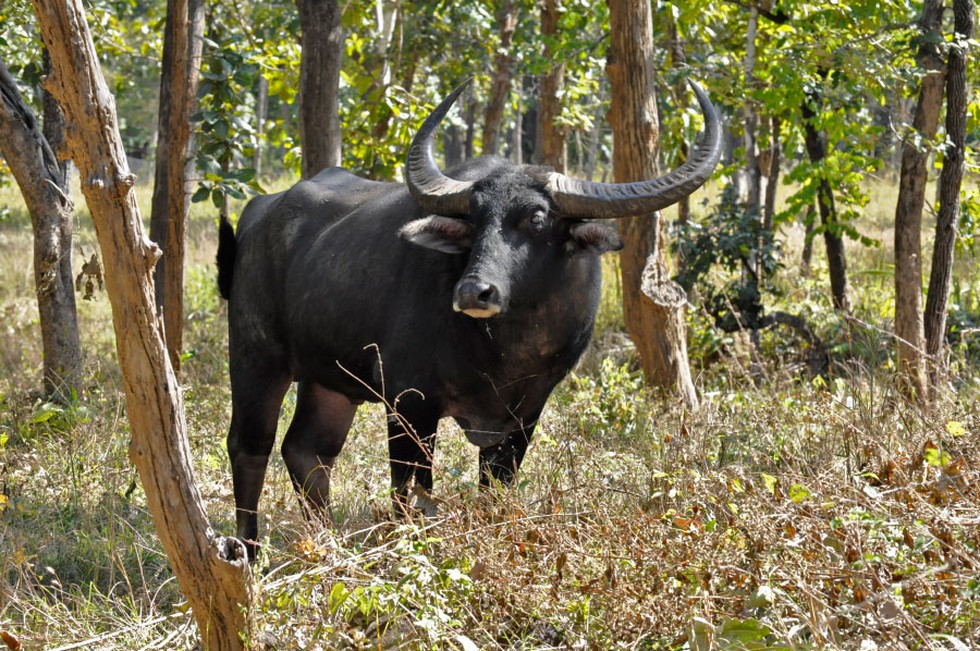
About Indravati Tiger Reserve:
- It is located in the Bijapur District of Chhattisgarh.
- The perennial river ‘Indravati’ forms the boundary of the reserve on the northern and western sides, which also happens to be the interstate boundary between Chhattisgarh and Maharashtra.
- The total area of the reserve is 2799.07 sq.km.
- The tiger reserve and the Bhairamgarh and Pamed Wildlife Sanctuaries constitute the Indravati landscape.
- It has connectivity with several tiger reserves, viz. Kawal (Telangana), Tadoba (Maharashtra), and Kanha (Madhya Pradesh).
- In general, the landscape is conflict-ridden owing to left-wing extremism.
- The landscape is undulating, with most of the area covered with small hills – Kutroo, Kandlapatru, and Matti Murka being noteworthy.
- Vegetation: Southern Moist Mixed Deciduous Forest with Teak, Southern Moist Mixed Deciduous Forest without Teak, and Southern Dry Mixed Deciduous Forest are the major forest types found in the Reserve.
- Flora: Some common species include teak, achar, karra, kullu, shisham, semal, haldu, arjun, bel, and Jamun.
- Fauna:
- It is home to one of the last populations of rare wild buffalo, the state animal of Chhattisgarh.
- Other animals include Nilgai, Black Buck, Sambar, Gaur, Tiger, Leopard, Chital, Sloth bears, etc.
Prelims Pointers
Aug. 31, 2025
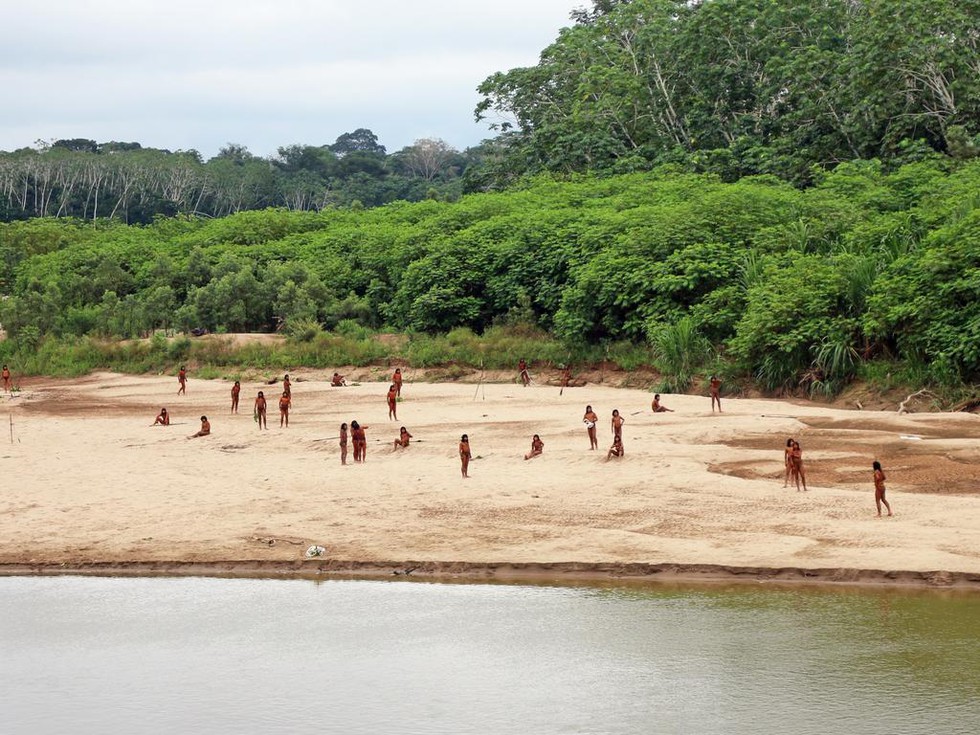
About Mashco Piro Tribe:
- The Mashco-Piro, or Mascho Piro, also known as the Cujareño people and Nomole, are an indigenous tribe of nomadic hunter-gatherers who inhabit the remote regions of the Amazon rainforest.
- They live deep in the rainforests of southeast Peru close to the border with Brazil and Bolivia.
- They are believed to have fled into the recesses of the jungle during the Amazon Rubber Boom in the late 1800s, a time of enslavement and death for many tribes.
- They live on the banks of the Las Piedras River in the Alto Purús National Park in huts constructed of palm leaf. In the rainy season, they retreat to huts in the rain forest.
- Their movements across their territory are highly dynamic, dictated by dry and rainy seasons.
- They speak a dialect of the Piro language.
- Way of Life:
- Members of the tribe wear very little clothing.
- Men, women, and children alike wear only a yellowish-brown cloth above the waist and perhaps arm and leg bands of the same color.
- They have medium stature and an athletic build.
- All have straight black hair worn shoulder length or longer.
- Men probably hunt with the weapons they have been seen carrying, such as bows and arrows, as well as spears.
- Peru’s government has forbidden all contact with the Mashco Piro, fearing the spread of a disease among the population to which it has no immunity.
Prelims Pointers
Aug. 31, 2025

About E-20 Fuel:
- Automotive fuel blends comprising 20% ethanol and 80% gasoline are referred to as E20 fuel.
- What is Ethanol Blending?
- Ethanol blending is a process of mixing or blending ethanol, a renewable biofuel, with petrol to create a cleaner and more sustainable fuel.
- Since ethanol is a viable biofuel that can be derived by processing biomass sources such as sugarcane, the practice of ethanol blending has largely reduced India’s dependence on fossil fuels and the high-value import of crude oil.
- Moreover, by adding ethanol to petrol, the oxygen content of fuel is increased, leading to lower emissions and cleaner burning.
- Additionally, since ethanol in India is largely derived from sugarcane molasses, rice, maize, and other agricultural sources, ethanol blending has also elevated the agricultural sector in India.
- With ethanol-blended petrol, India aims to tackle its ever-increasing fossil fuel dependence in a greener and more sustainable way.
- India’s Journey of Ethanol Blending:
- With several countries widely adopting ethanol blending, India’s journey towards achieving ethanol-blended petrol began in 2003, when the Government of India officially launched its Ethanol Blended Petrol (EBP) Programme.
- Since then, the ethanol blending in India has come a long way, achieving a 10% ethanol blend target in 2021-22, which was further increased to 12.06% in 2022-23, 14.06% in 2023-24, and 20% in July 2025, which was initially set to be achieved by 2030.
What is ethanol?
- Ethanol, also known as ethyl alcohol, is a type of alcohol that is commonly used in various applications.
- It is a clear, colourless liquid with a characteristic odour and taste.
- Ethanol has the chemical formula C2H5OH and is composed of carbon, hydrogen, and oxygen
- Pure ethanol is nontoxic and biodegradable, and if spilled, they break down into harmless substances.
- However, fuel ethanol contains denaturants to make fuel ethanol undrinkable.
- How is ethanol sourced?
- Ethanol can be produced from various sources, but it is often derived from renewable resources such as crops like corn, sugarcane, barley, and wheat.
- It can also be produced from cellulosic materials like agricultural residues and wood.
Prelims Pointers
Aug. 31, 2025
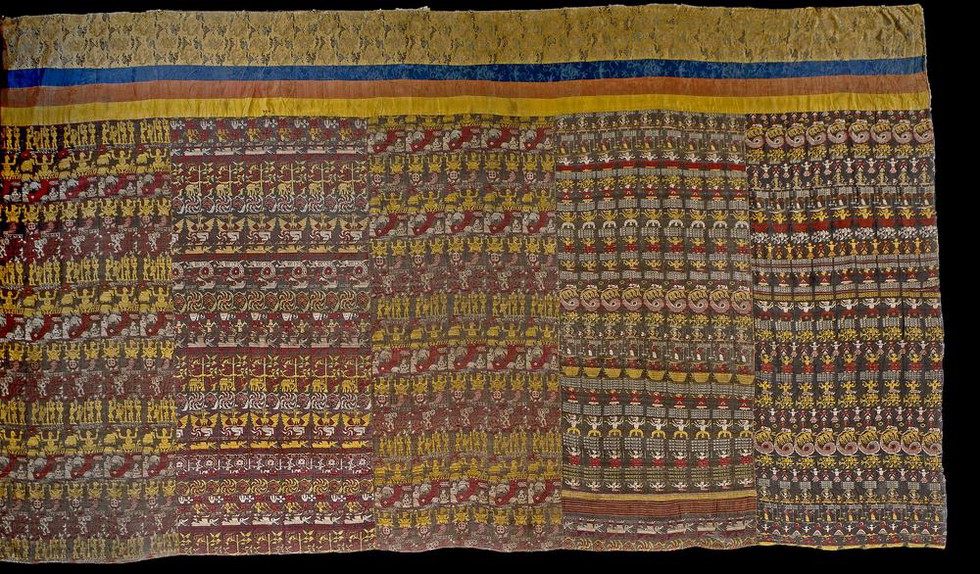
About Vrindavani Vastra:
- The Vrindavani Vastra is a silk textile woven in Assam.
- The childhood stories of Lord Krishna in Vrindavan, his divine pastimes, and various events are woven with thread on this cloth.
- It was created under the guidance of Srimanta Sankardeva, at the request of Koch king Nara Narayan, who ruled over parts of modern-day Assam and West Bengal.
- Notably, Nara Nararan had sheltered Sankardeva after the Vaishnav saint was targeted by the Ahom kingdom on the instigation of Brahmin priests in the state.
- The textile serves as a testament to Assamese weaving, incorporating elements from various artistic traditions, and travelled from Assam to Tibet before being acquired by the British Museum in 1904.
- The exhibit, acquired by the British Museum, is nine and a half metres long and is made up of several pieces of silk drapes and originally featured 15 separate pieces that were later assembled.
- A masterpiece of sacred art, the Vrindavani Vastra is a central part of Assamese Vaishnavism.
Prelims Pointers
Aug. 31, 2025

About Mela Patt Festival:
- It is dedicated to Lord Vasuki Nag, the presiding deity of Bhaderwah Valley.
- History: The festival, rooted in the Nag culture, marks the historic meeting between Mughal Emperor Akbar and King Nag Pal of Bhaderwah.
- The festival has been celebrated since the 16th century.
- This festival was first celebrated by King Nag Pal when Bhaderwah was known as Bhadarkashi,
- It is observed every year on Nag Panchami, seven days after the conclusion of the Kailash Yatra, and is renowned for its inclusive nature.
- The unique ‘Dikko Dance,’ a traditional folk performance where men and women of all religions and backgrounds participate, serves as a symbol of peace, pride, and communal harmony.
- Dhakku dance also known as traditional dance of Dogras has a respectable place in the folk dances of India.
- Significance: The festival not only honors religious traditions but also showcases the proud historical legacy of Bhaderwah.
- Mela Patt holds a special place in the cultural and religious fabric of the region.
Prelims Pointers
Aug. 31, 2025
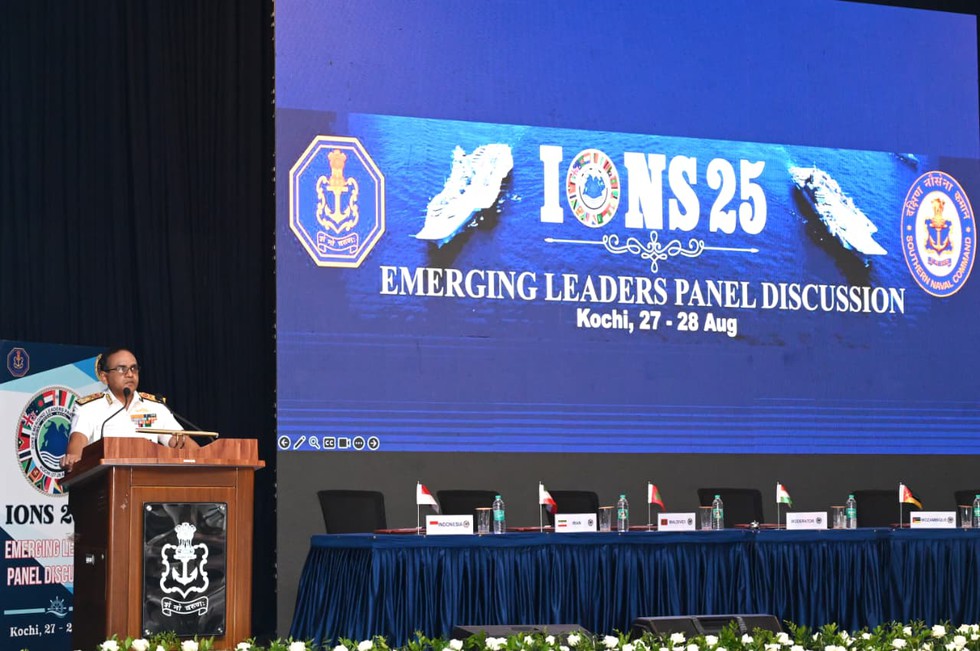
About Indian Ocean Naval Symposium:
- It is a voluntary initiative that seeks to increase maritime co-operation among navies of the littoral states of the Indian Ocean Region by providing an open and inclusive forum for discussion of regionally relevant maritime issues.
- It was conceived by the Indian Navy in 2008 as a forum which seeks to enhance maritime co-operation among Navies of the littoral states of the Indian Ocean Region.
- The inaugural edition of IONS was held in Feb 2008 at New Delhi, with Indian Navy as the Chair for two years (2008 – 2010).
- There are 36 littoral in the Indian Ocean which have been geographically grouped into the following four sub-regions
- South Asian Littorals: Bangladesh, India, Maldives, Pakistan, Seychelles, Sri Lanka and United Kingdom (British Indian Ocean Territory)
- West Asian Littorals: Iran, Oman, Saudi Arabia and United Arab Emirates
- East African Littorals: France (Reunion), Kenya, Mauritius, Mozambique, South Africa and Tanzania.
- South East Asian and Australian Littorals: Australia, Indonesia, Malaysia, Myanmar, Singapore, Thailand and Timor-Leste.
- Observers: China, Germany, Italy, Japan, Madagascar, the Netherlands, Russia and Spain.
Prelims Pointers
Aug. 31, 2025
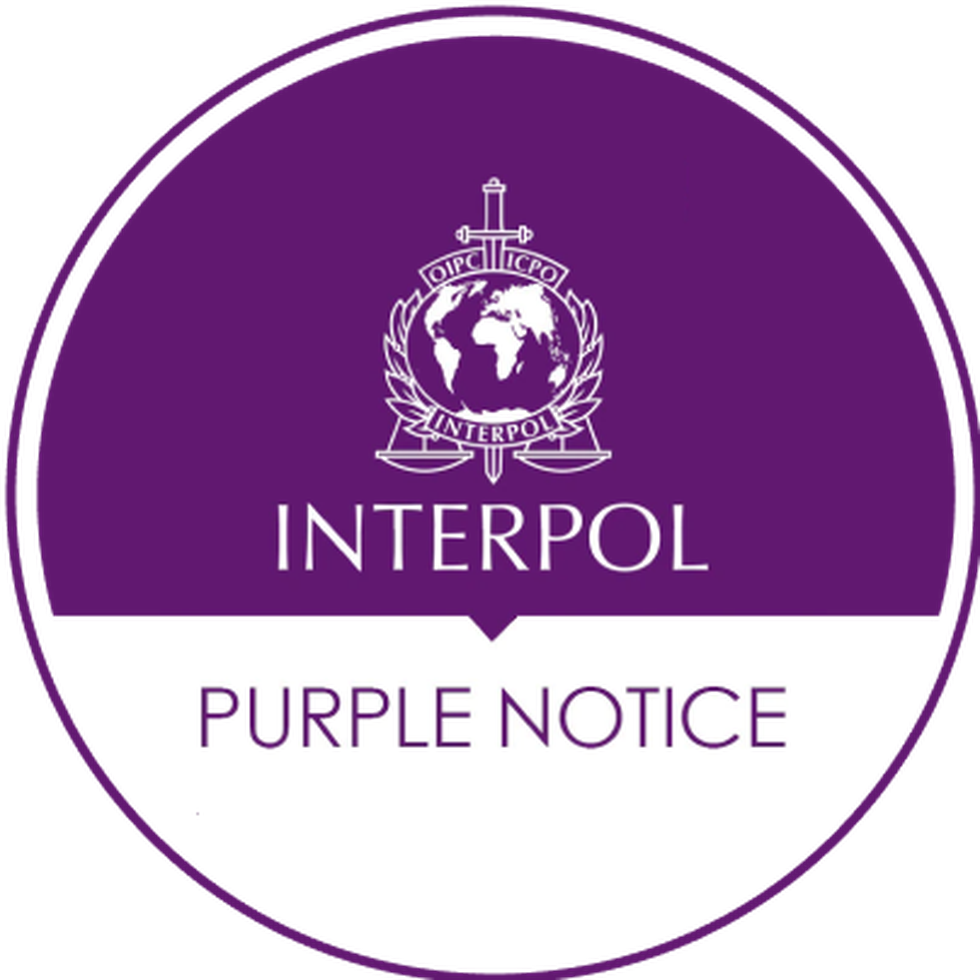
About Purple Notice:
- It is one of eight types published by the Interpol
- Purpose: It provides member countries with information on modus operandi, objects, devices and concealment methods used by criminals.
- Unlike notices that target specific individuals (such as Red Notices), Purple Notices focus on practices and tools that pose a threat to public safety.
- Other notices of Interpol: Red, yellow, blue, Black, green, Orange, Silver Notice (pilot phase)
Key Facts about Interpol
- The International Criminal Police Organisation (Interpol) was founded in 1923
- Members: Interpol is an international police organisation made up of 196 member countries.
- It does not work under the UN.It has enjoyed a special role – that of Permanent Observer at the United Nations – since 1996.
- Headquarter: Lyon, France.
- Functions of Interpol
- It is not a police force in the traditional sense—its agents are not able to arrest criminals.
- It is more of an information-sharing network, providing a way for national police forces to co-operate effectively and
- Tackle international crime ranging from human trafficking and terrorism to money laundering and illegal art dealing.
- Sharing of information is done by issuing colour-coded notices in four languages – English, Spanish, French, and Arabic.
- The organization operates centralized criminal databases that contain fingerprint records, DNA samples and stolen documents.
Prelims Pointers
Aug. 31, 2025

About Adi Vaani:
- It is an AI-based translation tool that serves as the foundation for a future large language model dedicated to tribal languages.
- It is India’s first AI-powered translator for tribal languages.
- It is developed under the banner of Janjatiya Gaurav Varsh.
- It is designed to bridge communication gaps between tribal and non-tribal communities, while safeguarding endangered tribal languages using advanced Artificial Intelligence (AI).
- The project combines advanced AI technologies with community-driven approaches to protect, promote, and revitalize tribal languages and cultures across India.
- It is developed by a national consortium of premier institutions led by IIT Delhi with BITS Pilani, IIIT Hyderabad, and IIIT Nava Raipur in collaboration with Tribal Research Institutes (TRIs) in Jharkhand, Odisha, Madhya Pradesh, Chhattisgarh, and Meghalaya,
- The project aims to:
- Enable real-time translation (text and speech) between Hindi/English and tribal languages.
- Provide interactive language learning for students and early learners.
- Digitally preserve folklore, oral traditions, and cultural heritage.
- Support digital literacy, healthcare communication, and civic inclusion in tribal communities.
- Awareness of the government schemes and important speeches
- Scope & Languages: In its Beta launch, Adi Vaani supports Santali (Odisha), Bhili (Madhya Pradesh), Mundari (Jharkhand), Gondi (Chhattisgarh)
- Methodology & Features of Adi Vani
- AI Language Models: Refined deployment of models such as No Language Left Behind (NLLB) and IndicTrans2 for low-resource tribal languages.
- Community Participation: TRIs, experts, and communities are involved in data collection, validation, and iterative development.
- Functional Toolkit of Adi Vani
- Text-to-Text, Text-to-Speech, Speech-to-Text, Speech-to-Speech translations.
- Optical Character Recognition (OCR) for digitizing manuscripts and primers.
- Bilingual dictionaries and curated repositories.
- Subtitles for Prime Minister’s speeches, health advisories (e.g., Sickle Cell Disease awareness), and information on government schemes and initiatives in tribal languages.
Prelims Pointers
Aug. 31, 2025
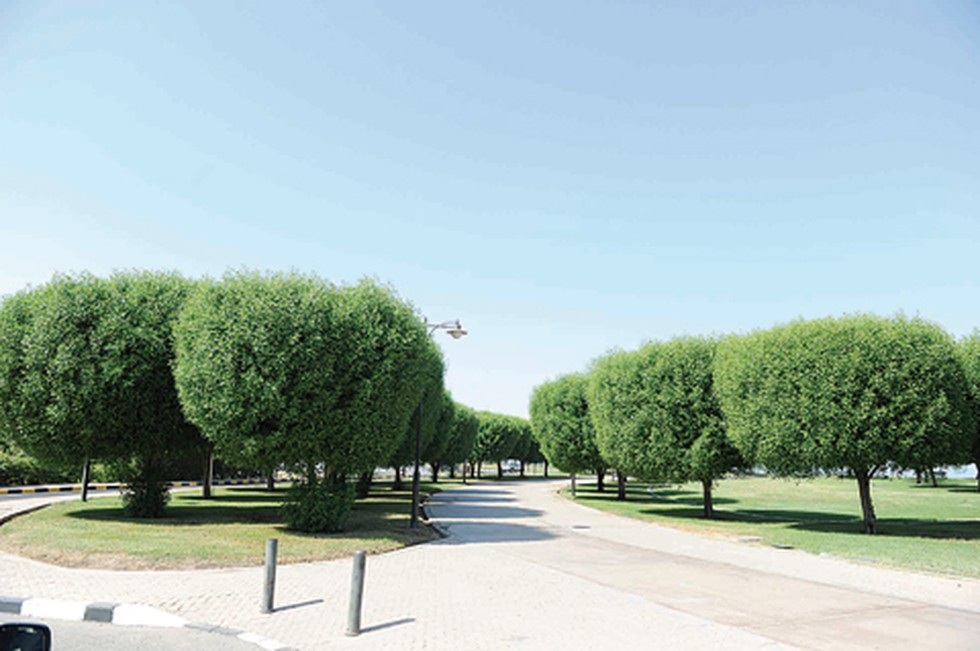
About Conocarpus Tree:
- It is a flowering plant belonging to the family of Combretaceae.
- It is an invasive mangrove species.
- Geographical Distribution of Conocarpus Tree
- The plant species has two types, one which is native to the coastal areas of tropical America, ranging from Bermuda and the Bahamas to Brazil, and extending along the Pacific coasts and parts of West Africa;
- Others are found in arid coastal zones of Somalia and Yemen and across eastern and northern Africa and the Arabian Peninsula.
- In India, the growth of the tree was found prevalent in Gujarat’s coastal and arid districts such as Kachchh.
- This tree is famous for its dark green leaves color throughout the year and withstands harsh environmental conditions such as high and low temperatures.
- It is very adaptive and could grow even in areas with extreme salinity.
- It absorbs more water from soil than other species and is a threat to groundwater.
- This species goes deep into the ground and grows too much to damage the communication cables, drainage lines and drinking water pipelines.
- During flowering seasons, the tree releases pollen, which may aggravate respiratory conditions such as asthma, rhinitis, and other allergic reactions, particularly in children and the elderly.
- It also poses a safety risk as its dry, brittle wood is highly flammable during the summer months.
Aug. 30, 2025
Prelims Pointers
Aug. 30, 2025

About National Disaster Management Authority (NDMA)
- Establishment: The NDMA, established under the Disaster Management Act, 2005, is the country's apex body for disaster management and is chaired ex officio by the Prime Minister of India.
- Objectives: NDMA is responsible for laying down the national policies, plans, and guidelines for disaster management, coordinating and enforcing implementation of these policies, and approving plans developed by ministries, states, and other agencies to ensure integrated responses to disasters.
- Vision: NDMA's vision is to build a safer and disaster-resilient India through proactive, technology-driven, and sustainable strategies involving all stakeholders.
NDMA Organisation Structure
- Composition: The NDMA is chaired by the Prime Minister of India, assisted by a Vice-Chairperson (Cabinet Minister rank) and up to eight Members (Minister of State rank).
- Divisions: It operates through specialized divisions, including Policy & Plans, Mitigation, Operations, Communications & IT, Administration, and Finance.
- Institutional Mechanism: At the state and district levels, State Disaster Management Authorities (SDMAs) and District Disaster Management Authorities (DDMAs) function under NDMA’s overall framework and guidelines.
NDMA Functions and Responsibilities
NDMA, as the apex body, is mandated to lay down the policies, plans and guidelines for Disaster Management to ensure timely and effective response to disasters. Towards this, it has the following responsibilities:-
- Laying down policies, approving the National Disaster Management Plan.
- Framing guidelines for central and state authorities, integrating mitigation measures into development plans.
- Coordinating the enforcement and implementation of disaster management policies and plans.
- Recommending provision of funds for mitigation efforts and capacity building.
- Supporting international disaster relief as directed by the central government.
- Overseeing the functioning of the National Institute of Disaster Management (NIDM).
- Training officials, conducting preparedness drills, and developing community resilience strategies.
Prelims Pointers
Aug. 30, 2025

About Mitochondria
- Mitochondria are double-membraned organelles that generate ATP (adenosine triphosphate), the universal cellular energy currency.
- They originated over a billion years ago through endosymbiosis between a primitive archaeal cell and a bacterium.
- Over time, mitochondria transferred most of their genes to the host nucleus, making them dependent on the host cell for protein supply.
Traditional Model of Protein Import
- Earlier, it was believed that mitochondrial proteins are imported only after translation is completed in the cytosol.
- Proteins were thought to fully synthesize on ribosomes before passing through mitochondrial membrane channels.
New Findings by Caltech Scientists
- Around 20% of mitochondrial proteins are cotranslationally imported, i.e., they are imported while still being synthesized by ribosomes.
- This mechanism mainly applies to large and structurally complex proteins that require assistance during folding.
- If these proteins fully fold in the cytosol, they risk forming irreversible structures that block import channels.
Mechanism of Cotranslational Import
- Such proteins contain a mitochondrial targeting sequence, but this alone is insufficient for cotranslational delivery.
- A second signal is required – the first large protein domain that emerges during translation.
- This domain acts like a “code to unlock the boarding pass”, ensuring the protein is guided into mitochondria early.
- Experiments confirmed that transplanting these domains onto other proteins rerouted them for cotranslational import.
Prelims Pointers
Aug. 30, 2025

About Cordualadensa acorni
- It represents the first Mesozoic dragonfly fossil in Canada and fills a 30-million-year evolutionary gap in dragonfly history.
- The fossil is a partial wing impression fossil preserved in the 75-million-year-old Dinosaur Park Formation (UNESCO World Heritage Site, Alberta, Canada).
- The fossil led to the creation of a new family, Cordualadensidae, highlighting its unique anatomical features.
Features of Cordualadensa acorni
- Wingspan: Roughly the width of a human hand.
- Anatomy: The wing structure indicates adaptation for gliding flight, a feature common in migratory dragonflies
- Ecological Role: Though small, it would have been an important part of the Cretaceous ecosystem, possibly serving as prey for raptors.
Distribution & Significance
- First dinosaur-aged dragonfly fossil discovered in Canada.
- It is the first North American member of the dragonfly group Cavilabiata.
- Before this, only one insect fossil (a microscopic aphid in amber) had been reported from the region.
Prelims Pointers
Aug. 30, 2025

About International Monetary Fund (IMF)
- The International Monetary Fund (IMF) is a global financial body aimed at strengthening international monetary cooperation and maintaining financial stability.
- Members: It currently has 191 member nations, with Liechtenstein joining as the newest member on October 21, 2024.
- Creation: Created in 1944 at the Bretton Woods Conference, it works through a quota system, with countries contributing funds and receiving voting power proportional to their quotas.
- Mission: The core mission of the IMF is to foster global monetary cooperation, secure financial stability, facilitate international trade, promote high employment and sustainable economic growth, and reduce poverty worldwide.
- Role: The IMF acts as a lender of last resort and often requires policy reforms from borrowing countries, called “structural adjustment” programs.
International Monetary Fund Governance Structure
- Board of Governors: It is the IMF’s highest decision-making authority, comprising one governor and one alternate governor from each member country. It meets annually to decide on quota revisions, Special Drawing Rights (SDR) allocations, new memberships, or expulsion of members.
- International Monetary and Financial Committee (IMFC): IMFC advises the Board of Governors on matters related to the management of the international monetary and financial system. It has 24 members drawn from the governors.
- Executive Board: They are responsible for conducting the day-to-day business and work closely with the Managing Director.
Prelims Pointers
Aug. 30, 2025

About India's First EMI-Based Credit Card
- Launch: Unity Small Finance Bank (Unity Bank) and BharatPe have jointly launched a credit card that allows customers to either pay in full or convert their spends into equated monthly instalments (EMIs). This is being introduced as India’s first EMI-driven credit card on the RuPay network.
- Partnership: The Unity Bank BharatPe Credit Card has been developed in association with the National Payments Corporation of India (NPCI).
- UPI Linkages: The card can be linked to Unified Payments Interface (UPI), enabling payments at a wide range of merchants nationwide.
- Eligibility: The card will be available to both salaried and self-employed individuals. Applications can be made through the BharatPe app, where users can complete onboarding, KYC, and credit eligibility checks digitally before card activation.
Key features of First EMI-Based Credit Card
- Auto-EMI Conversion: Purchases can be instantly split into EMIs up to 12 months, with flexible repayment options.
- Zero Fees: No joining, annual, or foreclosure charges—lifetime free card.
- UPI Integration: Linked to UPI for widespread merchant acceptance and instant payments.
- Reward Program: Earn flat 2% rewards on EMI transactions, redeemable through the BharatPe app.
- Premium Benefits: Complimentary domestic and international lounge access, and preventive health checkups.
- Digital Onboarding: Seamless application, KYC, and activation via the BharatPe app.
Prelims Pointers
Aug. 30, 2025
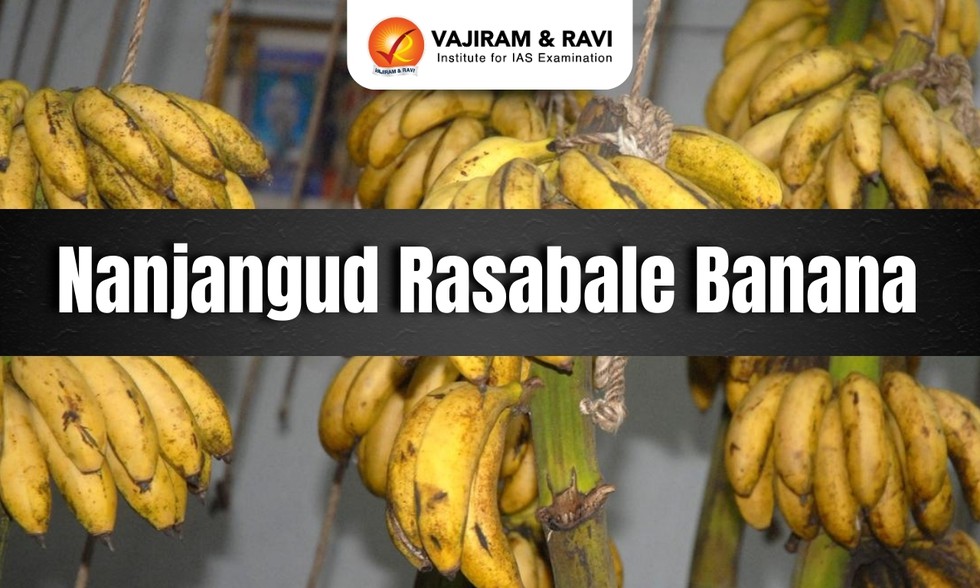
About Nanjangud Rasabale Banana:
- It is a variety of banana grown in and around the Mysore district and Chamarajanagar district of
- It was awarded the Geographical Indication (GI) tag in 2006 for its thick pulp and distinct taste and aroma.
- The taste and pulp of this banana cannot be found in any other variety and anywhere else.
- Soil required: Black clay alluvial saline soil has given unique aroma to this banana.
- This banana possesses medicinal properties and are believed to cure neurological ailments.
- Threats: The Panama Wilt disease, a fungal infection caused by the Fuserium Wilt pathogen has been the bane of rasabale farmers.
Key facts about Indian Council for Agricultural Research
- It is an autonomous organisation under the Department of Agricultural Research and Education (DARE), Ministry of Agriculture and Farmers Welfare, Government of India.
- It was formerly known as the Imperial Council of Agricultural Research, it was established on 16 July 1929 as a registered society under the Societies Registration Act, 1860, in pursuance of the report of the Royal Commission on Agriculture.
- Functions: The Council is the apex body for coordinating, guiding, and managing research and education in agriculture, including horticulture, fisheries, and animal sciences, throughout the country.
- India has one of the largest agricultural systems in the world, with 113 ICAR institutes and 74 agricultural universities across the country.
- Headquarters: New Delhi.
Prelims Pointers
Aug. 30, 2025
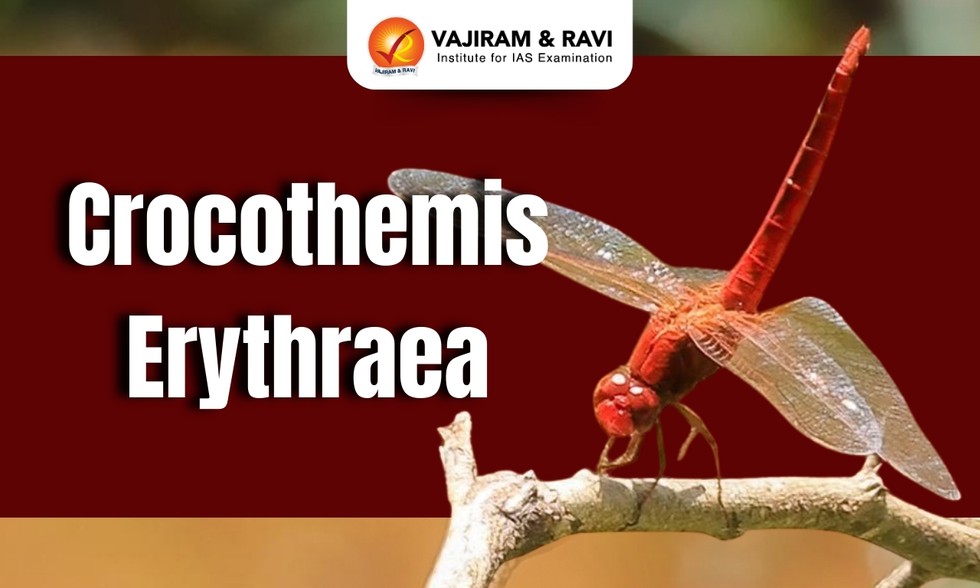
About Crocothemis erythraea:
- It is a species of dragonfly in the family Libellulidae.
- Its common names include broad scarlet, common scarlet-darter, and scarlet darter.
- The genus Crocothemis in India includes two known species— servilia and C. erythraea. While C. servilia is common across lowland areas, C. erythraea is known from high-elevation habitats in parts of Europe and Asia, including the Himalayas.
- The molecular analysis showed that the high-elevation specimens from the Western Ghats match C. erythraea found in the Himalayas.
- Habitat: The study confirmed that the Western Ghats hosts both the species, C. erythraea, which is restricted to cool, high-elevation habitats (>550 m), while C. servilia is common in lowland habitats (<600 m).
- The researchers explain that C. erythraea colonised southern India during the Pleistocene Ice Age, when cooler climatic conditions allowed temperate fauna to extend their range southward.
- As the climate warmed, these populations became stranded in montane locations like the Sholas and grasslands of Munnar and Parambikulam, where they survived in isolation.
Prelims Pointers
Aug. 30, 2025

About Extended Range Attack Munitions (ERAM) Missile:
- It is a next-generation, air-launched, precision-guided missile.
- It blends the destructive power of a heavy bomb with the standoff range of a cruise missile.
- Features of Extended Range Attack Munitions (ERAM) Missile
- Range: Depending on flight profile, ERAM can reach between 240 and 450 kilometers
- Warhead: Each carries a 500-pound high-explosive warhead, able to destroy hardened bunkers, fuel depots, or ammunition storage.
- Guidance: A combination of GPS, inertial navigation, and a terminal seeker provides accuracy within about ten meters, even when Russian forces attempt electronic jamming.
- Launch platforms: Compact and modular, ERAMs can be mounted on Western fighter jets such as the F-16s Ukraine is now receiving, or potentially retrofitted on existing Soviet-era aircraft.
- ERAM is designed for volume, cheaper to produce, and compatible with multiple aircraft types.
Prelims Pointers
Aug. 30, 2025

About State Energy Efficiency Index:
- It is developed by Bureau of Energy Efficiency (BEE) in association with the Alliance for an Energy Efficient Economy (AEEE).
- The index assesses the energy efficiency performance of 36 States and Union Territories (UTs) for FY 2023-24, supporting data-driven monitoring, best practice sharing, and healthy competition among states.
- This year it is the sixth edition features a new implementation-focused framework with 66 indicators covering Buildings, Industry, Municipal Services, Transport, Agriculture, DISCOMs, and Cross-Sector initiatives, reflecting evolving priorities like EV policies, star-rated buildings, and DSM strategies.
- SEEI 2024 serves as a key policy tool for guiding state-level actions and accelerating India’s energy efficiency and climate goals.
- States are classified into four performance categories: Front Runners (>60%), Achievers (50-60%), Contenders (30-50%), and Aspirants (<30%).
Key Highlights of the Index
- The top performers include: Maharashtra (Group 1: >15 MToE), Andhra Pradesh (Group 2: 5–15 MToE), Assam (Group 3: 1–5 MToE) and Tripura (Group 4: <1 MToE)
- 24 states have notified ECBC 2017; 10 states have MSME energy efficiency policies; 31 states have adopted electric mobility policies; and 13 states are promoting solar-powered agricultural pumps, with Kerala achieving 74% adoption.
- Additionally, all 36 States/UTs have developed State Energy Efficiency Action Plans (SEEAPs), and 31 have formed State-Level Steering Committees on Energy Transition.
Prelims Pointers
Aug. 30, 2025

About LUPEX Mission:
- It is jointly developed by ISRO and Japan Aerospace Exploration Agency (JAXA).
- Objective: To explore the moon’s southern polar region, investigating the presence of water and other elements, potentially in the form of surface ice.
- It aims to showcase innovative surface exploration technologies. The special focus is on vehicular transport and lunar night survival.
- It features both a lander and a rover.
- JAXA is responsible for developing and operating the rover, and ISRO for developing and operating the lander that will carry the rover.
- The rover will drive on its own to search for areas where water is likely to be present and sample the soil by digging into the ground with a drill.
- The plan is to acquire data by analyzing the collected samples in detail with observation equipment mounted on the rover.
- The rover will be equipped with instruments for measuring the water content of regolith (lunar sand), drilling, and sampling, as well as with other world-first and world-leading technologies for the driving system and batteries.
- The rover will carry not only the instruments of ISRO and JAXA but also those of the US space agency NASA and the European Space Agency (ESA).
Aug. 29, 2025
Prelims Pointers
Aug. 29, 2025

About International Atomic Energy Agency:
- It is the world’s leading intergovernmental organisation for scientific and technical cooperation in the nuclear field.
- The IAEA Statute was approved on 23 October 1956 and came into force on 29 July 1957.
- It is an autonomous organization within the United Nations system.
- It reports to both the United Nations General Assembly and the UN Security Council.
- Its primary goal is to ensure that nuclear energy is not diverted for weapons purposes.
- Member Countries: The agency currently has 180 member states, reflecting its wide international mandate and credibility.
- Institutional Structure of the IAEA
- General Conference: The General Conference, composed of all member states, meets annually to approve budgets and set general policy directions.
- Board of Governors: The Board of Governors, comprising 35 members, meets about five times a year to: Approve safeguards agreements, Carry out statutory functions, and Appoint the Director General.
- Secretariat: The Secretariat, led by the Director General, handles the IAEA’s daily operations.
- Functions of the IAEA
- The IAEA works to ensure that nuclear technology is used solely for peaceful purposes.
- It applies comprehensive nuclear safeguards, including: Monitoring, On-site inspections, Information analysis, and Other techniques to verify peaceful use.
- Headquarters: Vienna, Austria.
Prelims Pointers
Aug. 29, 2025
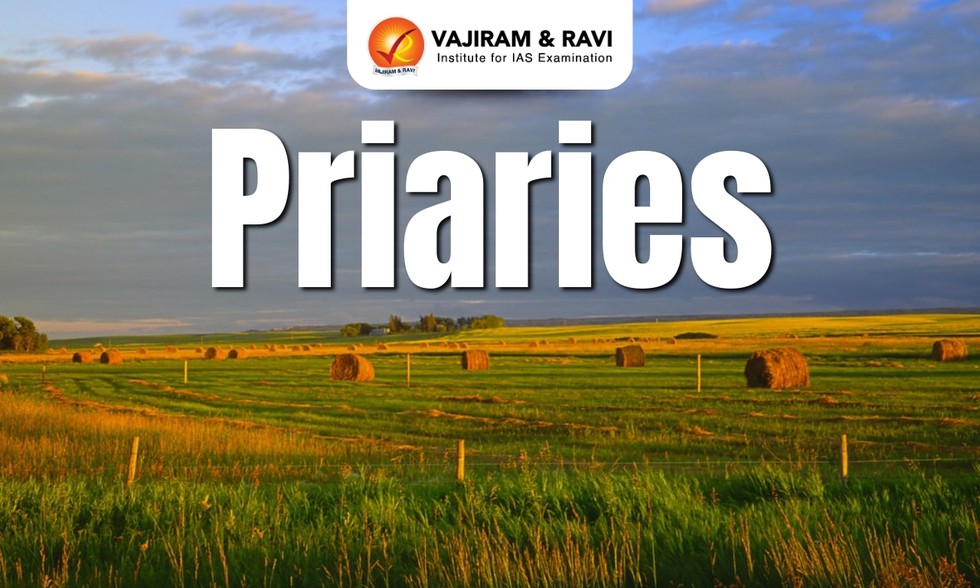
About Prairies:
- Prairies are flat, temperate grasslands found in North America.
- Most North American prairies are in locations with a low amount of annual
- Prairie vegetation is maintained by grazing, fire, drought, and low temperatures.
- Although grasses dominate, lichens, mosses, forbs, and low- to mid-size shrubs also comprise prairie vegetation.
- Taller shrubs and trees, mostly willows and poplars, including aspen and cottonwoods, are found in depressions and valleys where there is sufficient moisture and nutrients.
- Prairie, like other temperate grasslands, is among the most productive and diverse of earth’s terrestrial ecosystems.
- Grasses, the predominant cover in prairie vegetation, have the following adaptations:
- Deep or extensive roots.
- Growing points at or near the soil surface that are tucked in the crown of the plant.
- Narrow leaves.
- Small flowers in dense heads that are pollinated by wind.
- Tough stems and leaves hardened with silica phytoliths (plant stones).
- Strategies to optimize photosynthesis without losing moisture.
- Wildlife species living in prairies have adapted to a semi-arid, windy, open environment.
- Species found here include elk, deer, coyote, bobcat, Badgers, jackrabbits, ground squirrels, pocket gophers, etc
- Similar temperate grasslands in South America are called Pampas, while in Africa they are described as velds and in Asia are known as steppes.
Prelims Pointers
Aug. 29, 2025

About Mount Fuji:
- Mount Fuji, also called Fuji-san, is Japan’s tallest mountain, with a height of 3,776 meters.
- It is situated close to the Pacific coast in the Yamanashi and Shizuoka prefectures in the heart of the large island of Honshu.
- Tokyo, Japan’s capital, lies 60 miles (100 kilometers) to the east.
- It is an active stratovolcano, which last erupted from 1707 to 1708.
- It is part of the Fuji Volcanic Zone.
- The mountain is considered the world’s 7th highest mountain peak of an island and Asia’s 2nd highest volcano that is situated on an island.
- Mount Fuji is one of Japan’s “Three Holy Mountains” along with Mount Tate and Mount Haku.
- The mountain is the major feature of Fuji-Hakone-Izu National Park (1936), and it is at the centre of a UNESCO World Heritage site designated in 2013.
- The age of Fuji is disputed, but it seems to have formed during the past 2.6 million years on a base dating from up to 65 million years ago; the first eruptions and the first peaks probably occurred sometime after 700,000 years ago.
- The earliest precursors to Mount Fuji were Komitake (which forms the mountain’s north slope) and Ashitaka-yama (which sits southeast of the mountain).
Prelims Pointers
Aug. 29, 2025

About Gangotri Glacier:
- It is one of the largest glaciers in the Himalayas and is the primary source of the Ganges, the largest river in India.
- It is situated in the Uttarkashi district of Uttarakhand in the Garhwal Himalayas.
- It originates at the northern slope of the Chaukhamba range of peaks.
- It is fed by snow and ice from several peaks, including Shivling, Thalay Sagar, Meru, and Bhagirathi III.
- It lies at an altitude of around 4,000 meters bordering Tibet.
- The glacier is around 30 km in length and 4 km in width.
- Popularly known as Gaumukh, the terminus of the glacier resembles a cow’s mouth.
- From its snout at Gaumukh, the Bhagirathi River emerges, which later joins the Alaknanda River to form the Ganges at Devprayag.
- The Gangotri Glacier holds immense religious significance in Hinduism and is visited by thousands of pilgrims every year, who trek up to Gaumukh, the source of the Ganges.
Prelims Pointers
Aug. 29, 2025

About Nimbrix Missile:
- It is a counter-unmanned aircraft system (C-UAS) missile.
- The missile is being developed to counter the growing battlefield threat posed by small unmanned aerial vehicles (UAVs).
- It was developed by the Swedish defense company Saab. It is its first dedicated C-UAS
- Saab designed the missile to minimize costs, including through the use of additive manufacturing and low-cost commercial and military off-the-shelf parts.
- Features:
- It is a “fire-and-forget” guided missile.
- The missile will offer a range of up to 5 km and use an active seeker to track targets.
- It uses an air-burst warhead designed to detonate in the vicinity of small drones or other UAS, bringing down multiple at a time.
- Nimbrix is intended for ground-based use, operating either independently or as part of wider air defence systems.
- With adaptable mounting options, it can be fitted to vehicles or fixed positions to meet different customer requirements.
Prelims Pointers
Aug. 29, 2025
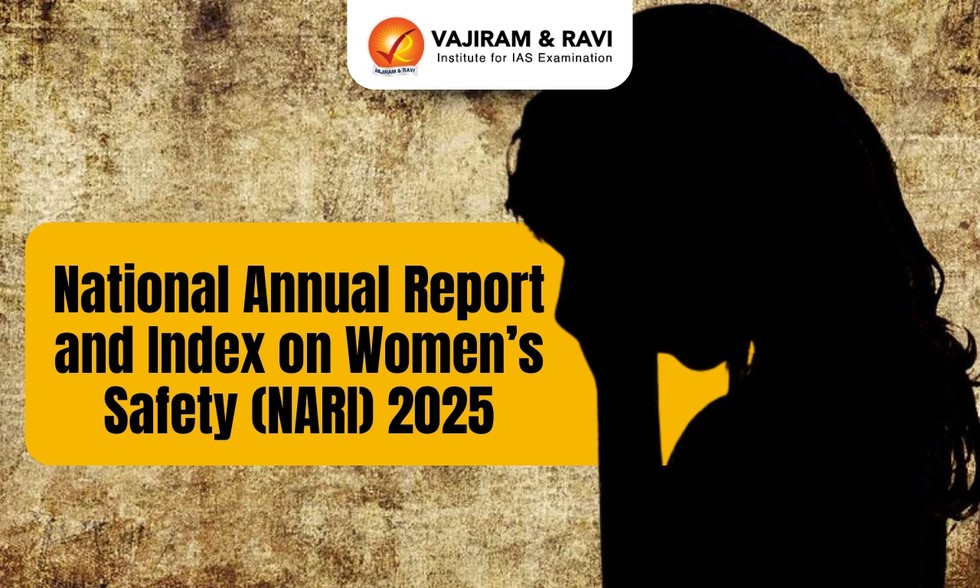
About National Annual Report and Index on Women’s Safety (NARI) 2025:
- Released by the National Commission for Women, NARI 2025 offers the telling reality of the urban safety landscape.
- The report, a collaborative effort by the Group of Intellectuals and Academicians (GIA), Pvalue Analytics, The NorthCap University, and Jindal Global Law School, is based on a survey of 12,770 women across 31 cities in all states.
- Highlights of the Report:
- It placed the national safety score at 65%, categorising cities as “much above”, “above”, “below” or “much below” this benchmark.
- Kohima, Visakhapatnam, Bhubaneswar, Aizawl, Gangtok, Itanagar, and Mumbai have emerged as the safest cities in the country for women, while Patna, Jaipur, Faridabad, Delhi, Kolkata, Srinagar, and Ranchi were ranked the lowest.
- Kohima and other top-ranked cities were associated with stronger gender equity, civic participation, policing, and women-friendly infrastructure.
- At the other end of the spectrum, cities like Patna and Jaipur fared poorly due to weak institutional responsiveness, patriarchal norms, and gaps in urban infrastructure.
- Overall, six in ten women surveyed felt “safe” in their city, but 40% still considered themselves “not so safe” or “unsafe”.
- Prevalence of harassment remains high, with 7% women reporting at least one incident of harassment in public spaces in 2024.
- The highest risk group is women under 24 years of age (14% reported harassment).
- Verbal harassment was most common (58%), with physical, psychological, economic, and sexual harassment reported less frequently.
- Neighborhoods (38%) and transport (29%) were the main hotspots for harassment.
- In terms of response, 28% of women confronted harassers, 25% left the scene, 21% sought safety in crowds, and 20% reported to authorities.
- The study revealed sharp drops in perceptions of safety at night, particularly in public transport and recreational spaces.
- While 86% of women felt safe in educational institutions during daylight hours, safety perceptions fall sharply at night or off-campus.
- The report shows low levels of faith in the redressal mechanism.
- Only one in three victims of harassment filed a formal complaint.
- Only one in four women expressed confidence that authorities would take effective action on their safety complaints.
- A concerning 53% were unaware whether their workplaces had a Prevention of Sexual Harassment (POSH) policy in place.
- Even when incidents are reported, only 22% are formally registered, and action is taken in a mere 16% of those cases.
Prelims Pointers
Aug. 29, 2025

About UMEED Portal:
- The ‘Unified Waqf Management, Empowerment, Efficiency, and Development(UMEED) Portal is a centralised digital platform to register Waqf properties across the country.
- It aims to promote better management and enhance transparency.
- The portal is being launched against the backdrop of the Waqf (Amendment) Bill, 2025.
- Registrations will be facilitated by respective State Waqf Boards.
- Legal Support: Rule 8(2) of the Unified Waqf Management, Empowerment, Efficiency and Development Rules, 2025, framed under Section 3(r)(iv) of the Unified Waqf Management, Empowerment, Efficiency and Development Act, 1995.
- Nodal Ministry: Ministry of Minority Affairs
- Key Features of UMEED Portal
- Under the new plan, all Waqf properties must be registered on the portal within six months of its launch.
- Each registration must include full details such as measurements (length and width) and geotagged locations.
- Properties that are registered under women’s names will not be eligible to be classified as Waqf properties.
- However, women, children, and people from economically weaker sections will continue to be key beneficiaries of Waqf assets.
- Properties not registered within the stipulated timeframe due to technical or other significant reasons may be granted an extension of one to two months.
- However, properties that remain unregistered beyond the permitted period will be considered disputed and referred to the Waqf Tribunal for resolution.
- Key features of the module include Aadhaar-based authentication of beneficiary details, online application and approval process managed by respective State/UT Waqf Boards and Direct Benefit Transfer (DBT) of maintenance support to beneficiaries’ bank accounts.
Prelims Pointers
Aug. 29, 2025
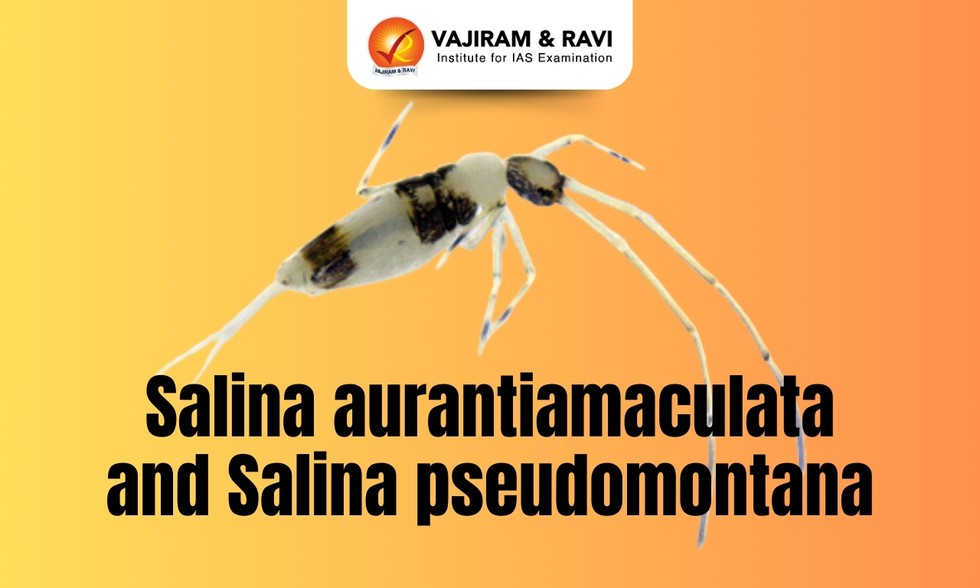
About Salina aurantiamaculata and Salina pseudomontana:
- Salina aurantiamaculata is named for its striking bright orange markings – an unusual pigment pattern among its peers.
- Its counterpart, Salina pseudomontana, looks very similar to the already known Salina montana.
- Both species belong to the cosmopolitan “celebensis” group of Collembola.
- The last time a Salina species was recorded in India was in 1979. After more than four decades, these two new additions bring the country’s tally to 17 species.
- What are Collembola Springtails?
- These are among the oldest land-dwelling hexapods on Earth, dating back hundreds of millions of years.
- They improve soil structure, aid nutrient cycling, and serve as indicators of ecosystem health. Their role, though often overlooked, is fundamental for the ecosystem.
- Habitat: They are found in leaf litter, decaying wood, and soil, they thrive quietly in habitats most of us overlook.
- Significance: Their abundance and sensitivity make them invaluable in monitoring pollution, climate change, and agricultural sustainability.
Prelims Pointers
Aug. 29, 2025

About Unified District Information System for Education Plus:
- It is an educational management information system under the Department of School Education & Literacy, Ministry of Education under the Government of India.
- UDISE+ functions as a central platform that enables respective schools to efficiently record and submit data related to its profile (infrastructure & facilities), individual students and teachers’ details.
- This is done in real-time mode by all recognised schools that provide formal, and special education in any of the school categories (that is, from pre-primary to higher secondary levels) throughout the country each academic year.
- The recorded data is validated by the MIS and other designated officials at the block, district and state levels; and monitored at four levels, including the national.
- Features of the UDISE+
- Each onboarded school is provided a unique 11-digit UDISE code & login credentials to complete data entry and its modification in real-time.
- School User Directory module enables onboarding of schools, and management of designated users who can submit data on the UDISE+. This module enables block, district, state and national level user overall management of the UDISE+.
- The data on school profile, students and teachers is reported in three distinct but integrated modules:
- School profile & facilities: Infrastructure details and services and facilities available in schools are recorded in this module.
- Student module: General and academic profile of each student, including extracurricular activities, are recorded and maintained in this module using the Permanent Education Number
- Teacher Profile: General, academic and appointment details of all teaching and non-teaching staff are recorded and maintained individually in this module.
Prelims Pointers
Aug. 29, 2025

About Burmese Python:
- It is one of the largest snake species in the world. It can grow up to 20 feet and weigh more than 250 pounds, with females being larger than males.
- It is a non-venomous, solitary and mainly nocturnal forest dweller snake.
- It is also an excellent swimmer and is able to stay submerged for up to half an hour. Burmese pythons spend the majority of their time hidden in the underbrush and will usually move only when hunting or when threatened.
- Until 2009, it was considered a subspecies of Python molurus, but is now recognized as a distinct species.
- Habitat of Burmese Pythons: They live in grasslands, marshes, swamps, wet rocky areas, caves, woodlands, rainforests, mangrove forests, river valleys, and jungles with open clearings.
- Distribution of Burmese Pythons
- It is native to the tropical rainforests and subtropical jungles of eastern and northeastern India, Myanmar, southern China, Southeast Asia, and some extent of the Indonesian archipelago. Its distribution also encompasses eastern Nepal, Bhutan, and Bangladesh.
- It is an invasive species in Florida as a result of the pet trade.
- Conservation Status of Burmese Pythons: IUCN: Vulnerable.
Aug. 28, 2025
Prelims Pointers
Aug. 28, 2025

About Export Promotion Mission:
- It is a flagship initiative announced in the Union Budget 2025-26.
- It seeks to enable broad-based, inclusive, and sustainable export growth over six years (FY 2025-31) by exploring approaches beyond conventional mechanisms to address key bottlenecks faced by Indian exporters, especially MSMEs.
- It is driven jointly by the Ministries of Commerce and Industry, the Ministry of Micro, Small and Medium Enterprises, and the Ministry of Finance to enhance export competitiveness by facilitating improved access to export credit, enabling cross-border factoring, and assisting MSMEs in addressing non-tariff barriers in global markets.
- The Department of Commerce is the lead department for the Mission.
- The mission is proposed to be implemented through two sub-schemes - Niryat Protsahan (over Rs 10,000 crore) and Niryat Disha (over Rs 14,500 crore).
- The main elements under the Niryat Protsahan scheme being considered by the government, include interest equalisation support worth over Rs 5,000 crore for six financial years (2025-2031), support for alternative trade finance instruments, a credit card for e-commerce exporters, and other financing mechanisms to bridge liquidity gaps faced by exporters.
- Similarly, under Niryat Disha, the proposed components include support for export quality compliance (about Rs 4,000 crore), overseas market development (over Rs 4,000 crore), branding, export warehousing and logistics, and capacity building to integrate more Indian enterprises into global value chains.
Prelims Pointers
Aug. 28, 2025

About Guillain-Barré syndrome (GBS):
- It is a rare autoimmune condition in which the body’s immune system attacks the peripheral nervous system.
- This is the part of the nervous system outside the brain and spinal cord.
- It controls muscle movement, pain signals, and temperature and touch sensations.
- GBS is also called acute inflammatory demyelinating polyradiculoneuropathy (AIDP).
- It can occur at any age, but it most commonly affects people between 30 and 50.
- Causes:
- The exact cause of the disease remains unclear, but it is often observed following a viral or bacterial infection, vaccination, or major surgery.
- At such times, the immune system becomes hyperactive, leading to this rare condition.
- Symptoms:
- Patients often begin with an unknown fever, followed by weakness and other nervous system-related symptoms.
- It can increase in intensity over a period of hours, days, or weeks until certain muscles cannot be used at all.
- Some cases of GBS are very mild and only marked by brief weakness. Others cause nearly devastating paralysis, leaving the person unable to breathe on their own.
- Treatment:
- There's no known cure for GBS.
- Several treatment options can ease symptoms and help speed recovery.
- Most people recover completely from GBS, but some serious illnesses can be fatal.
- While recovery may take up to several years, most people are able to walk again six months after symptoms first began.
Prelims Pointers
Aug. 28, 2025

About Punatsangchhu-II Hydroelectric Project:
- It is a 1 GW run-of-the-river hydroelectric power generating facility located in the Wangdue Phodrang district of Bhutan.
- It is located on the right bank of the Punatsangchhu River.
- The project is being developed by the Punatsangchhu II Hydroelectric Project Authority, under an Inter-Government Agreement (IGA) between the Royal Government of Bhutan and the Government of India.
- It is funded by the Government of India (GoI): 30% grant and 70% loan at 10% annual interest, repayable in 30 equated semi-annual installments commencing one year after the mean date of operation.
- With the completion of the Punatsangchhu-II project, Bhutan's installed power generation capacity has increased by about 40 percent to over 3500 MW.
- Features:
- The project involves the construction of a 91 m-high and 223.8 m-long concrete gravity dam, along with an 877.46 m-long and 12 m-diameter diversion tunnel with a discharge capacity of 1118 cubic metres per second.
- The project also involves a 168.75 m-long and 22 m-high upper cofferdam and a 02 m-long and 13.5 m-tall downstream cofferdam.
- The main dam will have seven sluice gates measuring 8m-wide and 13.20 m- high each.
- It will comprise an underground powerhouse measuring 240.7 m-long, 23 m-wide and 51 m-high. The powerhouse will be equipped with six Francis turbines of 170MW capacity each.
- The turbines will operate at a water head of approximately 236m.
Prelims Pointers
Aug. 28, 2025

About Pong Dam:
- The Pong Dam, also known as the Beas Dam, is an earth-fill embankment dam constructed on the river Beas in the wetland of Shivalik hills in the Kangra district of Himachal Pradesh.
- The purpose of the dam is water storage for irrigation and hydroelectric power generation.
- The construction of the dam began in the year 1961 and was completed in 1974, and at that time it was known as the tallest of its type in the country.
- The raised water level thus invariably created an artificial lake called the Maharana Pratap Sagar, after the great ruler of Mewar.
- It was declared a bird sanctuary in 1983 due to its waterfowl diversity.
- Over time, the reservoir emerged as a sanctuary for migratory birds, leading to its designation as a Ramsar Wetland Site in 2002.
- It is home to several species of avifauna, some of which include Barheaded Geese, Red-neck Grebe, northern lapwing, common teal, spot-billed duck, Eurasian coot, black stork, egrests, etc.
- It is the most important fish reservoir in the foothills of the Himalayas in Himachal Pradesh.
- Features of Dam:
- The Pong Dam is a 133 m tall and 1,951 m long earth-fill embankment dam with a gravel shell.
- It is 13.72 m wide at its crest, which sits at an elevation of about 435.86 m above sea level.
- The base of the Pong Dam is about 610 m wide and has a total volume of 35,500,000 metre cube.
Prelims Pointers
Aug. 28, 2025
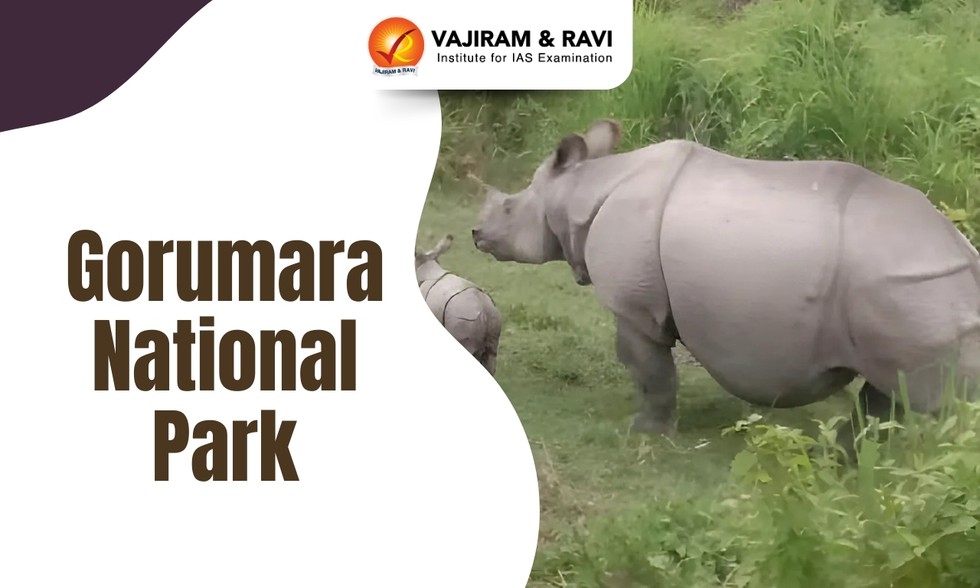
About Gorumara National Park:
- It is located in the Jalpaiguri district of West Bengal.
- It was declared a national park in 1992 and covers an area of approx 79.45 sq.km.
- It is situated on the bank of the Murti and Raidak rivers in the Terai region of Dooars on the foothills of the Eastern Himalayas.
- The park is known for its rich diversity of flora and fauna and is home to many endangered species, especially the one-horned rhinoceros.
- Flora:
- Typical flora include: Sal forests with Common Teak, Rain Tree (Shirish or Albizia lebbeck), and Silk Cotton (Shimul or Bombax malabaricum) trees, Bamboo groves, Terai grassland vegetation, and tropical riverine reeds
- It is also home to numerous tropical orchids.
- Fauna: It is home to many animals such as Indian rhinoceros, Asian elephant, Indian bison, leopard, sambar deer, barking deer, spotted deer, wild boar, and many species of birds, including peafowl, red jungle fowl, and the Indian hornbill.
Key Facts about Greater One-Horned Rhino:
- The greater one-horned rhino, also known as the Indian rhinoceros, is the largest of the three Asian rhinos and, together with African white rhinos, is the largest of all rhino species.
- Scientific Name: Rhinoceros unicornis
- Distribution:
- It can be found in India and Nepal, particularly in the foothills of the Himalayas.
- In the past, Greater one-horned rhinos roamed freely in the floodplains and forests alongside the Brahmaputra, Ganges, and Indus River valley.
- Kaziranga National Park in Assam, India, contains the largest population (2,401).
- Habitat: Greater one-horned rhinos are semi-aquatic and often take up residence in swamps, forests, riversides, and anywhere that is near nutritious mineral licks.
- Features:
- The largest of the Asian rhinos, male Indian rhinos weigh approximately 2,200 kg (nearly 4,840 pounds) and range in height from 170 to 186 cm (67 to 73 inches) and are 368 to 380 cm (145 to 150 inches) long.
- It is identified by a single black horn about 8-25 inches long and a grey-brown hide with skin folds, which gives it an armor-plated appearance.
- The species is solitary, except for females with small calves. Males maintain loosely defended territories.
- The rhino is primarily a grazer. Its diet consists almost entirely of grasses, but it also eats leaves, branches, fruit, and aquatic plants.
- Conservation Status:
- IUCN Red List: Vulnerable.
Prelims Pointers
Aug. 28, 2025

About PM SVANidhi Scheme:
- It was initially launched on 1st June 2020 to support street vendors who faced unprecedented hardships during the COVID-19 pandemic.
- It is implemented jointly by the Ministry of Housing & Urban Affairs (MoHUA) and Department of Financial Services (DFS), with DFS being responsible for facilitating access to loan/ credit cards through banks/financial institutions and their ground level functionaries.
Key facts about the Restructured PM SVANidhi Scheme
- The scheme’s coverage is being expanded beyond statutory towns to census towns, peri-urban areas
- The enhanced loan structure includes first tranche loans increased up to ₹15,000 (from ₹10,000) and second tranche loans increased up to ₹25,000 (from ₹20,000), while the third tranche remains unchanged at ₹50,000.
- The introduction of UPI-linked RUPAY Credit Card would provide immediate access of credit to the street vendors in order to meet any emergent business and personal requirements.
- In order to give boost to digital adoption, the street vendors can avail cashback incentives up to ₹1,600 on making retail & wholesale transactions.
- The scheme also focuses on building the capacity of the street vendors with a focus on entrepreneurship, financial literacy, digital skills, and marketing through convergence.
- Standard hygiene and food safety training would be conducted for street food vendors, in partnership with FSSAI.
- In order to ensure holistic welfare & development of the street vendors and their families, the ‘SVANidhi se Samriddhi’ component will be further strengthened, through monthly Lok Kalyan Melas.
- Significance: It envisages the holistic development of street vendors by offering a reliable source of finance to support business expansion and opportunities for sustainable growth. This will not only empower street vendors but will also foster inclusive economic growth, socio-economic upliftment of street vendors and their families.
Prelims Pointers
Aug. 28, 2025

About Glanders:
- It is caused by the bacterium Burkholderia mallei.
- It primarily affects equines such as horses, mules, and donkeys, and poses risks to other animals as well as humans.
- Signs: The disease causes nodules and ulcerations in the respiratory tract and lungs in animals. A skin form, known as ‘farcy’, also occurs.
- Glanders is commonly contracted via the following routes:
- Ingestion of food or water contaminated with nasal discharge from infected (carrier) animals
- Contact with contaminated harness components
- Ingestion of infected horse meat
- Glanders has traditionally been clinically categorized into nasal, pulmonary and cutaneous forms based on the most commonly affected organ systems in equines.
- Geographical Distribution: It remains sporadically reported in a number of Asian, African, Middle Eastern, and South American countries.
- Glanders is an WOAH-listed disease as described in the Terrestrial Animal Health Code of the World Organisation for Animal Health (WOAH). As indicated in the WOAH Terrestrial Animal Health Code any occurrence of glanders must be notified to the WOAH.
- The disease is notifiable under the Prevention and Control of Infectious and Contagious Diseases in Animals (PCICDA) Act, 2009.
- Revised National Action Plan Rolled Out to Eradicate Glanders; Govt Steps Up Equine Disease Control Measures
Prelims Pointers
Aug. 28, 2025
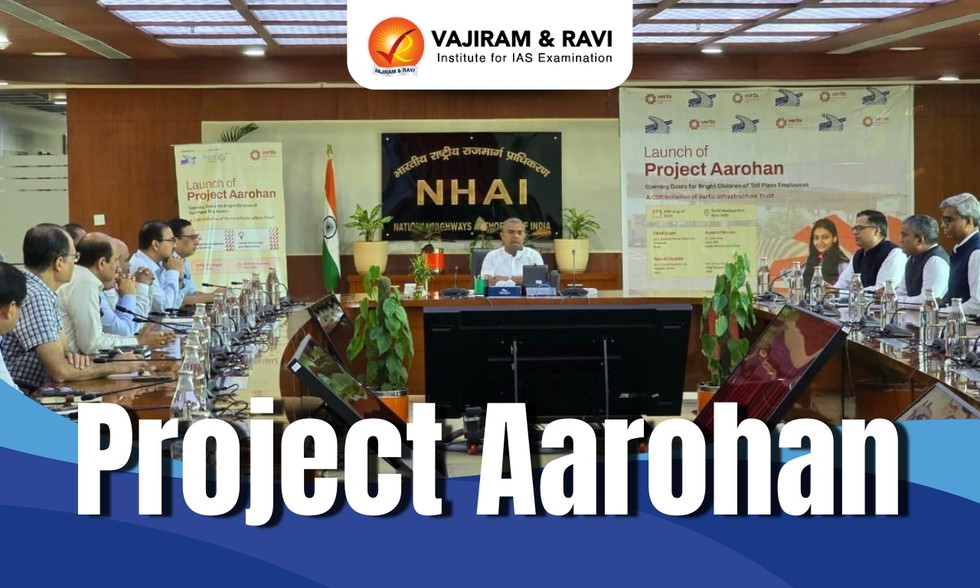
About Project Aarohan:
- It has an objective of to support the educational aspirations of the children of toll plaza employees.
- It was launched by the National Highway Authority of India.
- The nationwide project will reach a community of toll-plaza personnel that are deployed at a vast network of toll plazas on National Highways.
- The initiative aims to address financial barriers, bridge socio-economic divides and provide equal access to quality education for students from economically weaker sections, including girls from low-income households, first-generation learners and those from Economically Weaker Sections/Scheduled Castes/Scheduled Tribes/Other Backward Classes and minority communities.
- The program combines financial aid with structured mentorship, skill-building workshops, and career guidance to holistically prepare students for higher education, employment and entrepreneurship.
- It will be implemented by SMEC Trust’s Bharat Cares.
- Funding for Project Aarohan
- The first phase of ‘Project Aarohan’ will have a fund allocation of Rs. 1 Crore and will span from July 2025 to March 2026.
- The project aims to cover 500 students from Class 11 to the final year graduation, each receiving an annual scholarship of Rs.12,000 during FY 2025–26.
- Additionally, 50 bright students aspiring for postgraduate and higher studies will be supported with scholarships of Rs. 50,000 each.
Prelims Pointers
Aug. 28, 2025

About Exercise Bright Star:
- It is a multilateral exercise hosted by Egypt in conjunction with the US since 1980.
- It is amongst the largest Tri-Service multilateral exercises in the region.
- The exercise is held biennially, with the last edition having taken place in 2023, which witnessed the participation of a host of nations including India along with troops.
- The upcoming edition will feature a comprehensive spectrum of military activities, including:
- Live Firing by the three Services showcasing the operational capabilities of the Indian Army, Indian Navy and Indian Air Force.
- Command Post Exercise to enhance joint planning, decision-making and operational coordination.
- Short Training Exercises by all three Services focusing on varied aspects of modern warfare.
- Subject Matter Expert Interactions on multiple domains of contemporary military operations.
- Significance: Participation of the Indian Armed Forces in this exercise underscores India’s commitment to regional peace, stability, and security while enhancing Jointness, interoperability and cooperation with friendly foreign countries.
Prelims Pointers
Aug. 28, 2025
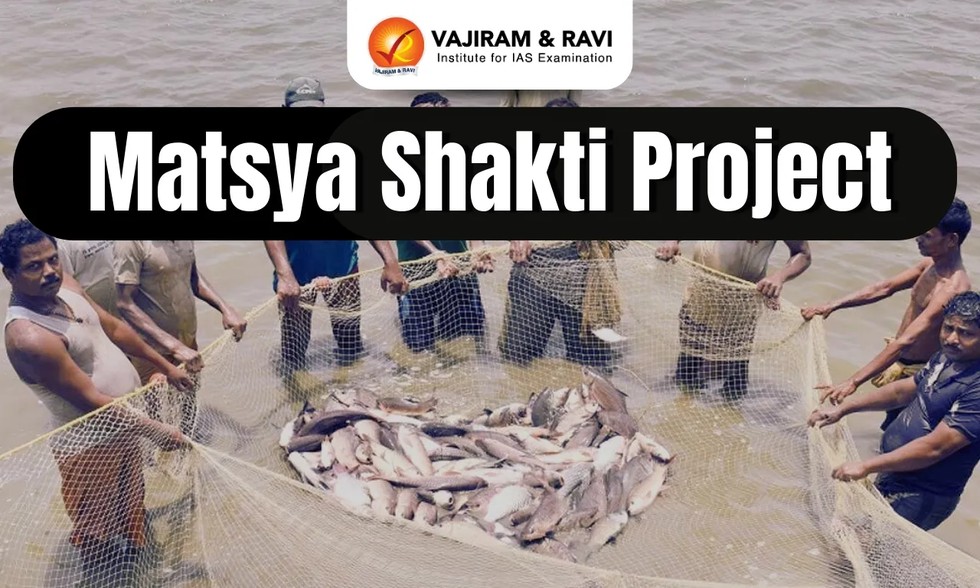
About Matsya Shakti Project:
- It is designed to empower minority fishing communities.
- It aims to equip participants with comprehensive skills for improved livelihoods and community welfare.
- The initiative will be implemented by the Vizhinjam Regional Centre of the ICAR–Central Marine Fisheries Research Institute (CMFRI), under the Ministry of Agriculture and Farmers’ Welfare.
- It is conceived under the Pradhan Mantri Virasat Ka Samvardhan (PM VIKAS) scheme.
- Features of Matsya Shakti Project
- The project seeks to enhance the socio-economic well-being of minority fisherfolk families in the district.
- It promises a year-long, phased training programme for members of the community, focusing on sustainable livelihood practices and modern skill development.
- Through hands-on training in areas such as integrated aquaculture, seed production, and advanced fisheries technologies.
Key Facts about Pradhan Mantri Virasat Ka Samvardhan (PM VIKAS) scheme
- The PM VIKAS Scheme launched under the Ministry of Minority Affairs is a central sector scheme.
- It provides skill development, leadership training and entrepreneurship to minorities and artisan communities all over India.
- The scheme is divided into four components and is expected to benefit around 9 lakh candidates during the 15th Finance Commission Cycle (2025-26).
- The PM VIKAS Scheme also consolidates five already existing schemes: Seekho aur Kamao, USTTAD (Upgrading the Skills and Training in Traditional Arts/Crafts for Development), Hamari Dharohar, Nai Roshni Nai Manzil
- The merging of the scheme provides financial support to minorities and artisans while also integrating Skill India Mission and also working with other ministries like Women and Child Development, Panchayati Raj, Tourism and Education for the overall development in minority concentrated areas.

